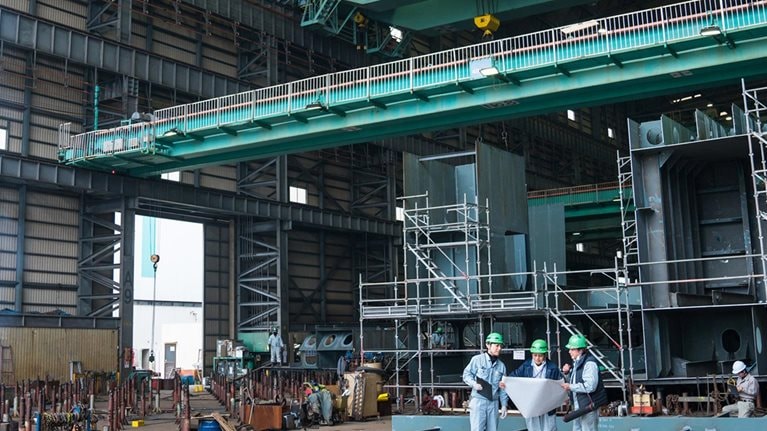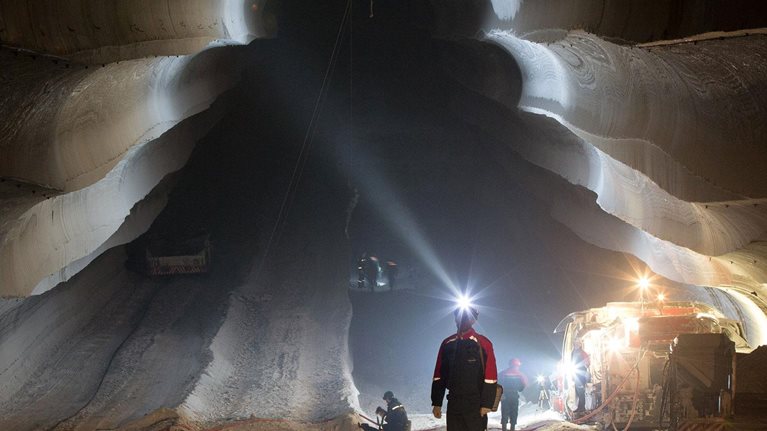After getting badly burned in the commodities bust earlier in this decade, miners and metals producers are embarking on another round of capital investment. As a new build cycle begins, owners and contractors have the opportunity to reflect on where they’ve excelled in planning and executing capital projects—and where they’ve fallen short.1 Several common issues tend to erode value in mining projects, ranging from inadequate design to insufficient supervision. But one issue is persistently under-addressed: a lack of rigor at the feasibility-study (FS) stage.
Stay current on your favorite topics
Many mining executives still rely on the same FS processes they did years ago, when resources were more accessible and projects less risky to plan and execute. That’s a problem because today’s projects are becoming larger, more complex, and often more remotely located—making them more susceptible to cost overruns.2 It’s clear that the methodology of years past simply won’t suffice: when we studied the financial statements of more than 40 recent mining and metals projects, only a fifth of them delivered the financial returns predicted at feasibility stage (Exhibit 1). The potential value at stake is significant here—if we believe that moving a feasibility study from “good to best” could generate some 10 percent additional value on projects,3 changing FS practices may be worth over $100 billion to the mining and metals project industry over coming years (2020–25).4

Lack of rigor impairs feasibility studies
Most FS that we see are developed with insufficient rigor, largely attributed to a combination of structural industry issues and habitual shortcuts taken by owners.
First, the industry does not widely use standard criteria for what constitutes a FS with sufficient maturity to ensure a narrow estimate band and predictable outcomes. While some standards exist for resource estimation and reporting at FS stage, companies have few benchmarks to go by for a wide swath of other elements, such as engineering definition, execution and operational readiness, business objectives, or commodity price predictions—all of which can change a project calculus significantly. In one example, a major mining company failed to align its FS and marketing strategy on a large project, causing it to delay submitting the project to its investment committee. As a result, it lost hundreds of millions of dollars in net present value (NPV).
Second, FS often suffer at the hands of subpar management practices. Owners may impose artificial schedule constraints to rush to get a project live or meet timeboxed key performance indicators (KPIs). They may also take technical shortcuts, such as bypassing metallurgical test work, or undertake risk assessments that are incomplete. One international miner eschewed value-improvement exercises on a project due to a cited “lack of time,” leaving approximately $500 million of NPV on the table. The project failed investment committee review.
Third, many FS continue to rely on the current state of technology rather than account for anticipated technology advances such as autonomous vehicles, advanced analytics, and other digital tools. When they become operational five to seven years later, such mines run with outdated technology and owners leave value on the table.
Finally, the typical contracting environment at FS stage rarely incentivizes EPCM5 contractors to maximize value for the owner and to find creative solutions—leading to “habitual” designs and suboptimal FS.
Would you like to learn more about our Capital Projects & Infrastructure Practice?
Five ways to enhance feasibility studies
Five key changes to mining and metals FS can increase the certainty of project outcomes.
1. Define prescriptive standards for key FS components
Mining project developers would do well to follow a set of standardized criteria when conducting an FS. Some design their own standards, while others not positioned to do so may refer to existing third-party processes and criteria, such as those provided by the American Association of Cost Engineers. We believe that any FS team should approach a study with a minimum of 11 core criteria in place (see sidebar, “A comprehensive set of standards for a feasibility study”).
2. Enforce a systematic and holistic project value improvement (PVI) process at FS
Mining project owners frequently treat PVI as a one-off exercise at the end of FS. However, this can lead to suboptimal trade-offs between the most appropriate design on the one hand and schedule and cost pressures to avoid design changes and conclude the FS on the other. Instead, we recommend that PVI should be deployed continuously—for instance, via a dedicated team or entity—starting at prefeasibility study stage, through the duration of the entire FS, and beyond. Owners should create a recurring process to improve a project’s NPV by using capital-expenditure (capex), operating-expenditure (opex), commercial, and schedule-optimization tools throughout the entire FS.
We saw an example of how this works when a gold miner doubled the project NPV for a new underground development through an extensive value-improvement effort over several months, including optimizing the mining method to accelerate first ore and reduce development costs, modularizing parts of the surface facilities, and leveraging suppliers in high-value countries. Another potential strategy might be to apply analytical methods to existing data (such as drilling records), allowing miners to refine their understanding of ore body or mine plan and optimize process-plant design accordingly.

Avoiding mistakes of the past: A CEO’s checklist in a commodity upswing
3. Stress test the FS assumptions against detailed capex and opex benchmarks, supported by predictive analytics
Owners and contractors should validate capex estimates through benchmarking at the discipline level as a minimum, and at higher levels of granularity for high-cost disciplines (such as formwork, rebar placement, and pouring for concrete). Capex benchmarks should be as granular as person-hours per meter of piping, or dollar per person-hour for labor.
These detailed benchmarks can validate high-level cost estimates by providing visibility into how the project’s idiosyncrasies will manifest during construction, and how that will impact overall cost. Exhibit 2 shows a typical cost breakdown for a concentrator’s direct costs that can be used for high-level estimate validation.

Benchmarking also provides an opportunity for the project team to identify cost-reduction opportunities by reflecting on design and front-end planning choices that can lower costs. Exhibit 3 maps estimated placement rates for a concentrator construction and compares them to regional and global benchmarks. The exercise suggests that the estimate for structural steel work assumes less productive crews than comparable projects; this creates an opportunity to revisit the structural steel-erection execution plan with a view to capturing an estimated 15 to 20 percent cost reduction.

Opex benchmarks enable companies to stress test their operating-model efficiency assumptions. However, most owners do not use opex benchmarks that are granular enough, and so can miss both optimization opportunities and key risks. Instead, owners should focus with an eye for detail on granular opex KPIs, asking themselves questions across the following domains:
- Productivity. How many full-time operators will the operation have per tonne of output? What will the processing plant utilization and availability be? What will the major mining equipment utilization/availability be compared to similar operations?
- Consumables. How efficiently are we using our diesel, explosive, or grinding material compared to operations of a similar size?
- General. Are our G&A expenses right-sized in relation to total cost? What is our IT cost per full-time employee?
Finally, project developers may also use predictive analytics to simulate potential outcomes of various capex and opex assumptions to select the optimum combination. For example, estimators could predict labor productivity for a given country, elevation, and facility type versus assumptions for construction methodology, construction stage, productivity measures, camp conditions, and so on.
4. Incentivize the FS contractor to maximize value and lay early groundwork for a strong contracting strategy
Owners can help align incentives toward a rigorous FS by encouraging contractors to think out of the box about value maximization. Three levers can prompt FS contractors to maximize value (but not their fees):
- Add competitive tension by having multiple contractors bid for the project. This prevents gold-plating and maximizes NPV, while creating a pool of potential value-creation ideas from which to choose. While conducting multiple studies does add upfront costs, we find that this sum is typically small compared to the overall project and is frequently outweighed by the significant savings afforded by having a high-quality FS.
- Ensure contractors have “skin in the game” by tying part of their fees to a successful FS outcome. For example, contractors could be promised a share of cost savings that are identified and captured versus pre-FS, or they could receive bonus or project completion payments upon achieving start-up date and design throughput. Owners might even consider giving contractors an equity stake in the project to further align their incentives.
- Embed owner’s operations and maintenance representatives into the FS contractor’s project team, bringing in-depth knowledge of the company’s operating processes and challenges. This often reduces rework after handover and further forces operations teams to take ownership of solutions, given they have to “sleep in the bed they made.”
Doing this well requires leaders to set up the foundations of a contracting strategy early on. This starts with an in-depth assessment of the planning, execution, and operations ramp-up risks. Owners should also set appropriate provisions in the contracting strategy to enable easy deployment of the digital/technology strategy. Once risks are identified and strategy agreed upon, owners can evaluate the contractor market based on relevant experience with similar projects. The final step involves assessing the desired level of involvement by the owner’s team before determining the split of contract packages and the delivery model.
5. Build and optimize a rigorous integrated master schedule, and embed construction planning, operations readiness, marketing strategy, and digital aspiration at every step of FS development
Finally, teams would do well to bear in mind some fundamental best practices in delivery, often overlooked in FS:
- Develop a detailed construction execution strategy, including defining work packages, planning site logistics, detailing construction sequence, and planning for modularization and offsite fabrication.
- Implement rigorous constructability and operability reviews of FS design. This should ideally be performed using a 3-D model of the facility, conducted by construction professionals and senior owner’s operations and maintenance representatives, including short-listed construction contractors.
- Invest early in operations readiness work and address, as a minimum, the commissioning plan and equipment strategy, performance management and operating practices, continuous improvement practices, roles and responsibilities, and culture.
- Make the project’s technological and digital aspirations an integral part of developing the FS construction execution plan and operating strategy, covering, for example, productivity, safety, and reliability enhancement technologies.
Each of these levers is critical, but none can succeed without a strong and cohesive team to underpin the project—fostering transparent communication, problem resolution, and end-to-end accountability—supported by rigorous project-management science and dedicated capabilities in construction and operation planning.
Feasibility studies are more than just a mandatory process step or stage gate; they are the last real opportunity for mining and metals project developers to thoroughly define and optimize a project business case and rigorously plan for execution and operations before the “clock starts ticking.” An owner may often wish to minimize study costs—which is good practice, broadly speaking—but any compromise or shortcut during FS inevitably leads to surprises during execution or production ramp-up. Investing in getting FS right could save the mining and metals industry some $100 billion-plus over the next five years. As the phrase goes, “pay now or pay more later.”


